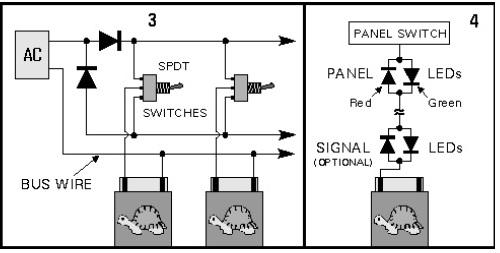Dewey, thank you for the photos of the machines with two wires, each of which goes to the motor. I now understand that you use a terminal strip during set-up, to avoid the labor of reversing the motor leads at the switch during installation.
Sorry to sound obtuse, however, I still don't see how (perhaps a picture of the other ends of the wires?) you are able to change polarity using single throw (form A) switches. You say SPST, then correct it to say DPST, but both of those, by definition have either (one) or (two) form A contact sets. There is no way to reverse polarity using Form A contacts.
Jim, yes, that's the diagram that I use on mine. And I, too, understand that the polarity of the motor determines the direction that it turns, but I can't seem to understand how Dewey is getting a reverse polarity out of single-throw switches. By definition, they either are ON or OFF.
In the Tortoise diagrams, in figure 1, they are using DPDT (2 form C) contacts, and in figures 2 and 3, they are using SPDT (1 form C) contact arrangements. Since he still maintains that he is not using double-throw (form C) switches,
"...from my recycled DPST Toggles[not SPST as earlier posted]..."
I am still confused.






